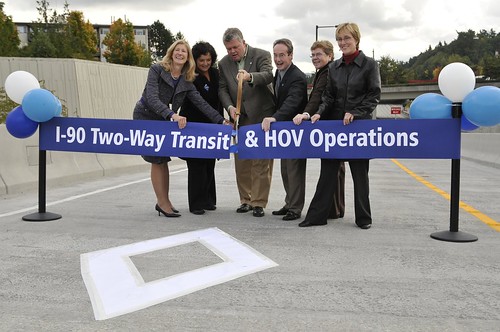Event Alert: Federal Transit Administration’s (FTA) ITS Program Strategic Planning Web Conference – June 24, 2009 @ 2:00PM
The Federal Transit Administration’s Office of Mobility Innovation is holding a web conference on June 24, 2009 from 2:00-4:00pm to elicit discussion on the vision and direction for transit ITS research for the next five years and beyond.
 Specifically, FTA seeks input and insights into a proposed set of goals and research areas. FTA is also interested in exploring new opportunities for research and development, technology transfer, and evaluation of next generation transit ITS technologies. The web conference is designed to present the results-to-date of the strategic planning effort and to invite discussion from the public. All feedback will be captured and incorporated into FTA’s ITS strategic planning effort. Using this input, the FTA’s Office of Mobility Innovation expects to be able to program a robust agenda for research and deployment assistance that reflects the current and future needs of the transit industry.
Specifically, FTA seeks input and insights into a proposed set of goals and research areas. FTA is also interested in exploring new opportunities for research and development, technology transfer, and evaluation of next generation transit ITS technologies. The web conference is designed to present the results-to-date of the strategic planning effort and to invite discussion from the public. All feedback will be captured and incorporated into FTA’s ITS strategic planning effort. Using this input, the FTA’s Office of Mobility Innovation expects to be able to program a robust agenda for research and deployment assistance that reflects the current and future needs of the transit industry.
If interested in attending, please RSVP to: Charlene.Wilder@dot.gov or Robert.Marville@dot.gov.
Please note the connection instructions below on your calendar. There will be no confirmation or reminder Emails sent in response to your RSVP.
—————————————————————————————————————————————————
Instructions for Connecting to the Webinar:
Webinar Date: June 24, 2009; 2:00 – 4:00 PM ET
First: Connect to the web meeting at: https://www.mymeetings.com/nc/join/
Conference number: PW4373046
Audience passcode: STRATEGIC
Second: Dial into the web meeting teleconference:
Toll Free Number: 888-677-1341
Participant passcode (verbal): STRATEGIC
Please connect to the webinar 15 – 20 minutes before the start time to facilitate the processing of attendees by the webinar operator.
Cut and paste links into your browser’s address bar if they do not open automatically.
IMPORTANT: As of September 2008, Live Meeting 2007 net conferencing software. You must download Live Meeting 2007 to join this Webinars. There is no upgrade from Live Meeting 2005 to the 2007 version. Instructions are here: http://www.pcb.its.dot.gov/t3/info_requirements.asp. If link does not open automatically, cut and paste it into your browser’s address bar.
—————————————————————————————————————————————————




